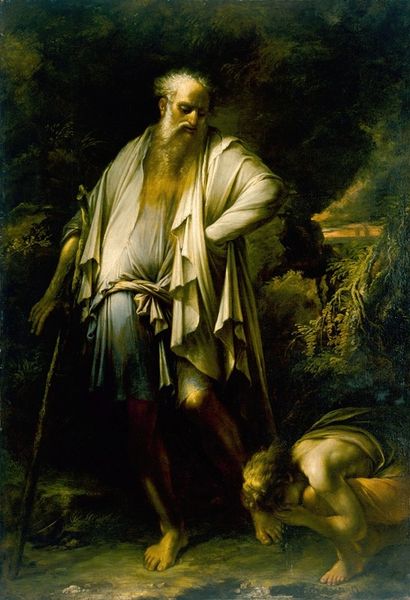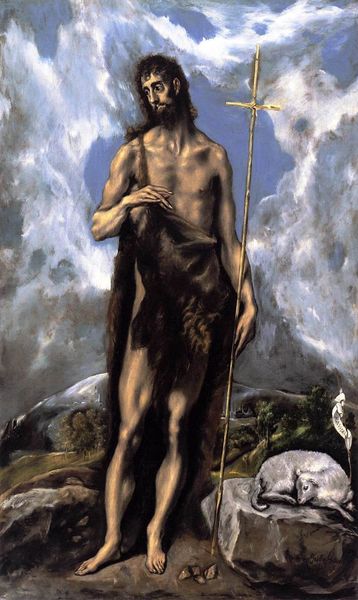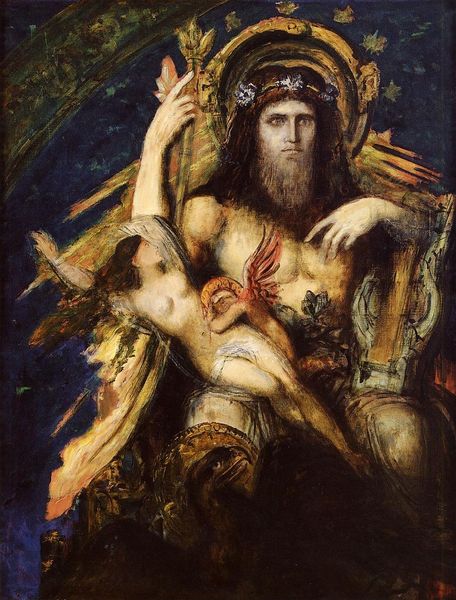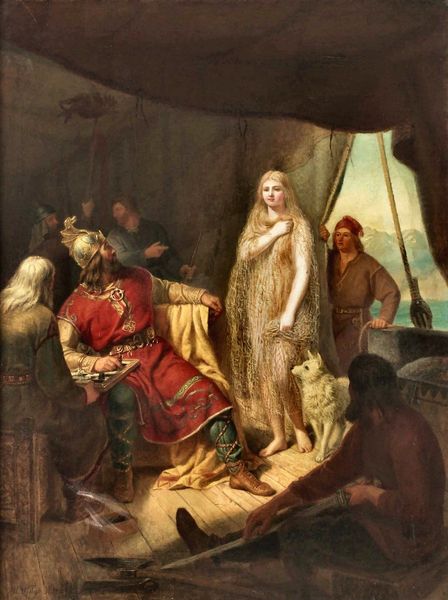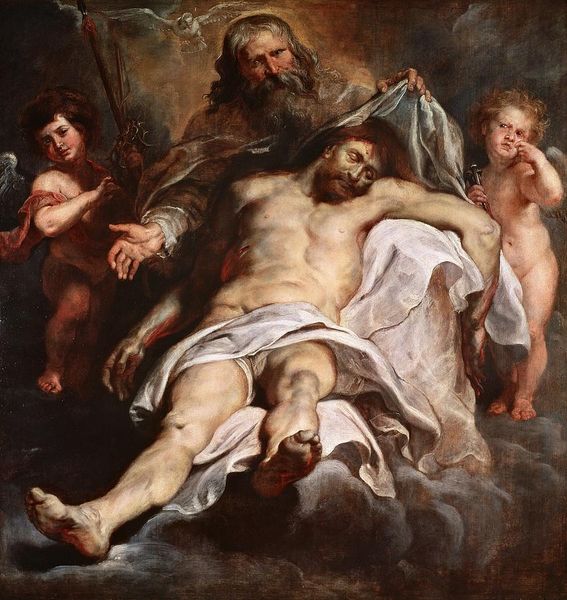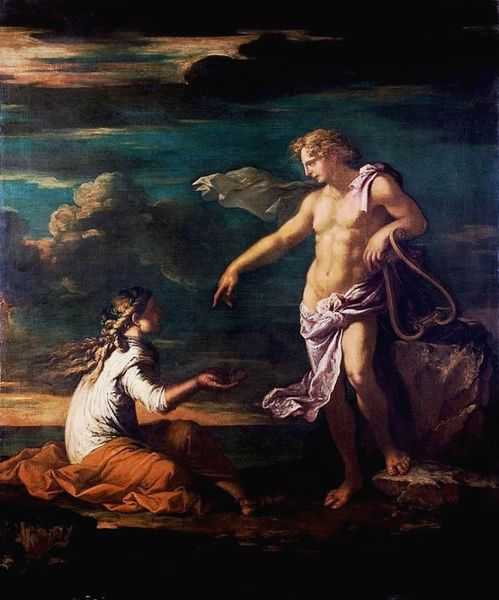
painting, oil-paint
#
portrait
#
baroque
#
painting
#
oil-paint
#
figuration
#
oil painting
#
history-painting
Dimensions: 263 x 175 cm
Copyright: Public domain
Curator: So here we have Rubens’ “St. Augustine,” painted in 1639, now hanging at the National Gallery in Prague. Editor: Wow, there’s so much happening here! It's all quite swirling and atmospheric. You have an old, imposing figure in the foreground alongside what appears to be a baby on the beach... Curator: It’s a dramatic Baroque painting. Augustine, the philosopher and theologian, encountering a child—it is said to be Christ, but represented here, delightfully, as a chubby child—who is digging a hole to put the sea into. It’s meant to represent Augustine's struggle to grasp the concept of the Trinity. Editor: Ah, okay! So that's where that theological metaphor emerges, right there on the beach with shells and chubby limbs. There’s that sense of the divine interwoven into the everyday. That child reminds us of the vastness of time but contained within the present moment. And the other angelic figure floating in the clouds! Curator: Right. Rubens renders him lost in thought, in his rich, weighty robes, almost disconnected from this child. The lighting focuses in on that little golden form to capture a certain glow. Editor: It makes me wonder, in his era of profound political and religious tension, whether Rubens sought in the tale of Augustine's "illumination" by divine epiphany a more inclusive vision that transcends theological debates. How does such a symbolic depiction play amidst rising sociopolitical tensions? Curator: That is a compelling question. I do think Rubens has a unique sense for presenting deep thought alongside a relatable tenderness. This blend has lasting significance and gives audiences a unique insight. Editor: I find it intriguing how art intersects with theology to echo into broader discourses that encourage more nuanced approaches to historical figures and periods. Curator: Indeed. There are many different ideas layered and that might just be what keeps it engaging century after century!
Comments
No comments
Be the first to comment and join the conversation on the ultimate creative platform.


